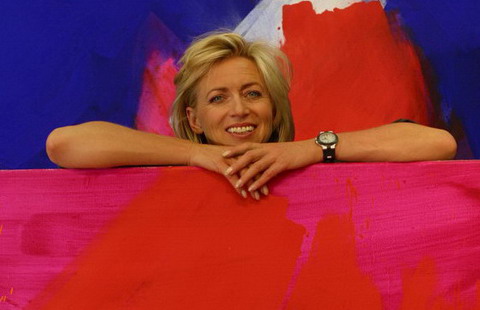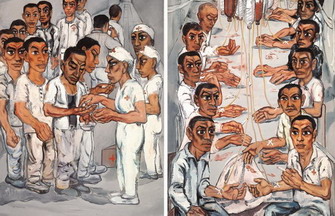New Bronze age
By Liu Lian ( China Daily ) Updated: 2014-02-27 07:31:20
|
The small Chinese pottery bowl that started with a $3 price tag was eventually sold for $2.23 million during an auction at Sotheby's on March 19,2013,in New York. |
| Controversial piece has art world in a flap |
|
 |
| Sotheby's makes its biggest ever London art sale |
The bronzes from the Western Zhou Dynasty (c. 11th century-771 BC) onward are worth noting because they have lengthy descriptions applied to the pieces, says Howard-Sneyd.
"The reason that is important is because in many cases, these are the only historical documents, or sometimes the only historical proof of an event happening or a person being at a particular time," he says.
In 2011, China overtook the US as the world's largest art market. Annual sales of auction houses on the Chinese mainland reached about $4.4 billion in 2012, led by Chinese calligraphy and paintings, porcelain and contemporary Chinese art, according to a report released by the China Association of Auctioneers and Artnet.
Until recent years, collectors shied away from archaic Chinese bronzes due to their limited knowledge and the limited market supplies. China's laws and regulations on the protection of cultural relics prohibit transactions of Chinese archaic bronze excavated after 1949 and ones without provenance, which explains the art form's lukewarm appeal in China and why most major sales happen overseas, says Wang.
But the surging prices in the main categories of Chinese art prompted collectors to expand their horizons to water ink paintings and the bronzes.
"This (Chinese bronze) is perhaps a field that has been eclipsed in terms of the strength of Sotheby's other collection fields. With period Chinese porcelain for instance, the price began to move very fast from 2007 onwards. The bronze didn't really move at that time," says Howard-Sneyd. "It feels (as if Chinese bronzes) is a field that has not had its day in the recent surge of prices in Chinese art."
The highest amount paid for an ancient Chinese bronze was $12 million for a 2,500 year-old bronze figure of a tapir in March 2007 at the European Fine Art Fair in the Dutch city of Maastricht on behalf of Littleton & Hennessy, the London- and New York-based specialist dealing in Asian art.
The highest record for a Chinese bronze in the US was set in 2001 by Christie's in New York - $9.24 million for a "Vincent dish" party jar from the Shang Dynasty (c. 16th century-11th century BC).
Sotheby's New York held a single-owner sale of ritual bronzes from the collection of Julius Eberhardt last September. Originally valued at between $3.5 and $5.3 million, the 10-piece collection brought in a total of $16.78 million. The buyers of the collection were all international collectors and none of them was from the Chinese mainland, Wang says.
Increasing interest in Chinese bronze has meant that potential buyers ended up pushing up the price based on supply and demand, Jason Sun says.
"Bronze is always historically considered expensive in terms of the market. It's being a market of significant interest and importance, one that was not probably valued for maybe 15, 20 years," Howard-Sneyd says. "I would expect that to continue for another couple of years."
- Art summit focuses on big picture
- Christie's holds inaugural auction
- Sotheby's charity auction fetches $2.5 million
- Top 10 Chinese art works sold at auctions for 2013
- Top 10 Chinese painters and western artists
- London art market buzzing after Christie's contemporary art sale
- Top 10 lots at Christie's 2013 sale
|
|
|
|
|
|
|
|
























 Raymond Zhou:
Raymond Zhou: Pauline D Loh:
Pauline D Loh: Hot Pot
Hot Pot Eco China
Eco China China Dream
China Dream China Face
China Face





